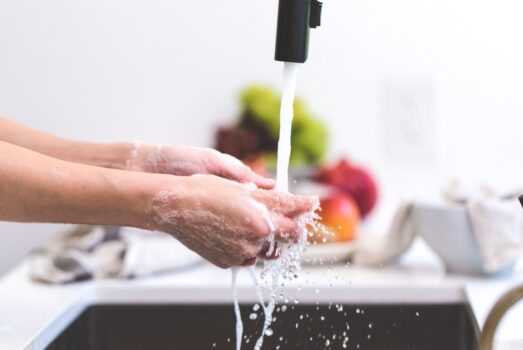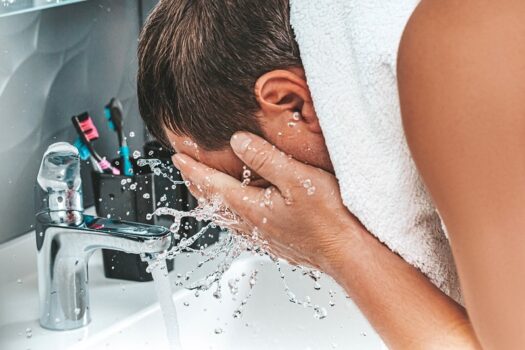Well water may feel slimy, slippery, or silky after softening due to increased sodium levels in well water.
You may also feel the water to be slimy or slippery if you recently installed a water softener and have been using hard well water all your life.
Sometimes your softener may be working all right, but you may still feel well water is slippery and slimy. Another common reason well water feels slimy is high iron bacteria. Sliminess due to iron bacteria is often accompanied by discolored water, metallic taste, and smell.

Slimy Well Water Due to Water Softener Problems
A salt-based water softener works on the ion-exchange principle. It removes calcium and magnesium from water and replaces them with sodium or potassium (based on the type of salt used). Most softening salts are sodium based.
Although sodium is added in tiny amounts, the absence of hardness minerals (calcium and magnesium) and the addition of sodium make water extra slippery.
The salt required to soften well water depends on the hardness level. Extremely hard water with hardness levels above 180 mg/L requires more salt than moderately hard (61-120 mg/L) water. Hence, extremely hard water may feel a bit slimier than moderately hard water after being softened.
A faulty softener may also make your water extra slippery. If you’ve used a water softener for some time and suddenly notice water getting extra slimy, your softener is probably out of order. The simplest fix is to service your softener. You can also get it checked by a professional. Moreover, softeners older than 10-12 years usually require a replacement when they get old.
You can also try potassium-based salts for softening. These salts are slightly expensive but may work for you.
Is Water from a Salt-Free Water Softener Slimy?
No. Water from a salt-free water softener doesn’t get slimy because a salt-free softener doesn’t add or remove anything from the water. It doesn’t change the chemical nature of the water but changes the way it behaves; it conditions water. The water doesn’t stick to surfaces or feel slimy, slippery, or silky.
Salt-free water softener has a lot of benefits over salt-based conditioners. It is maintenance-free and doesn’t discharge brine. However, you must ensure that well water is treated (iron-free) before it enters a salt-free softener.
Slimy Water due to Iron Bacteria
If your softener is working all right, but well water gets slimy, the culprit is likely iron bacteria. This is a common occurrence and can be effectively dealt with by shock chlorinating your well. Please note that chlorination is a time-taking process and may take 1-2 days before you start using your water after chlorinating, provided you have chlorine filters installed.
Is Slimy Water Bad for You?
There is negligible sodium in slimy water. You will get 7-10% of your daily sodium requirement if you drink 2-2.5 liters of softened water. Most people install an RO water filter for drinking and cooking purposes; it removes sodium effectively. However, you may want to check with your doctor before installing a salt-based water softener if you are on a low-sodium diet.
Slimy or softened water is good for your home. It won’t leave stains on appliances or damage plumbing, fittings, and fixtures.

Should I Test Well Water for Sliminess?
Yes. A water test will help you rule out the possibility of iron bacteria or any other contaminant making water slimy or slippery. EPA recommends annual testing for private wells. A water test, in this particular case, will guide you on how to remove slipperiness. You can decide (based on test results) to eliminate iron bacteria via chlorination, service, or replace water softener for your well.
How to Reduce Slippery Feeling from Soft Water?
Use Pure Soap: Use pure soap (free from additives). Most American homes have hard water. Hence, many soap manufacturers add softening agents and chemicals to soaps to make them work in hard water.
Use less Shampoo: Hard water requires more shampoo and soap than soft water because it doesn’t lather much. Reduce the detergent for washing, bathing, dishes, or any other task involving soap and water.
Let it be: Give yourself time to get used to soft water.
